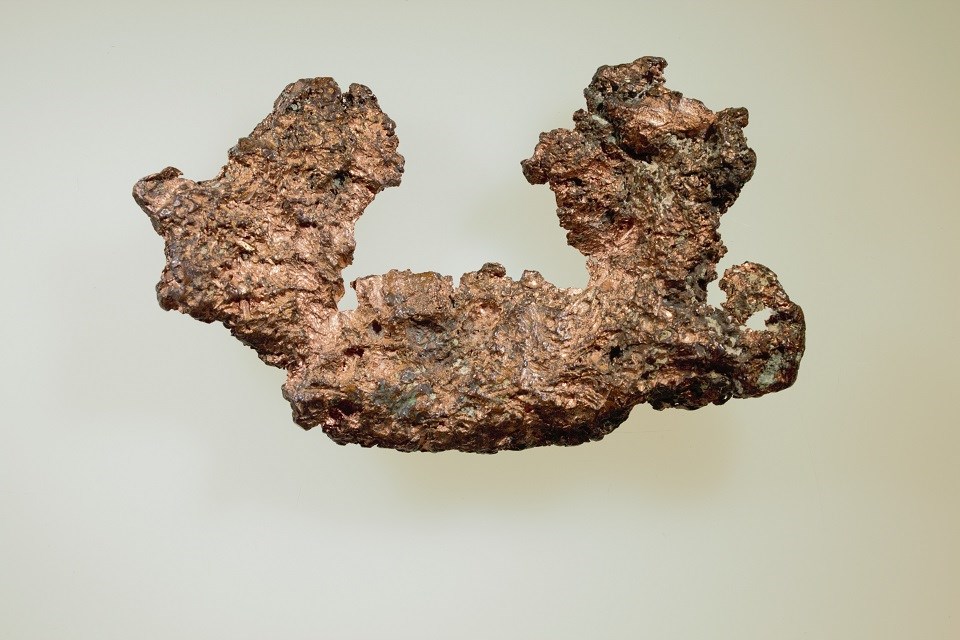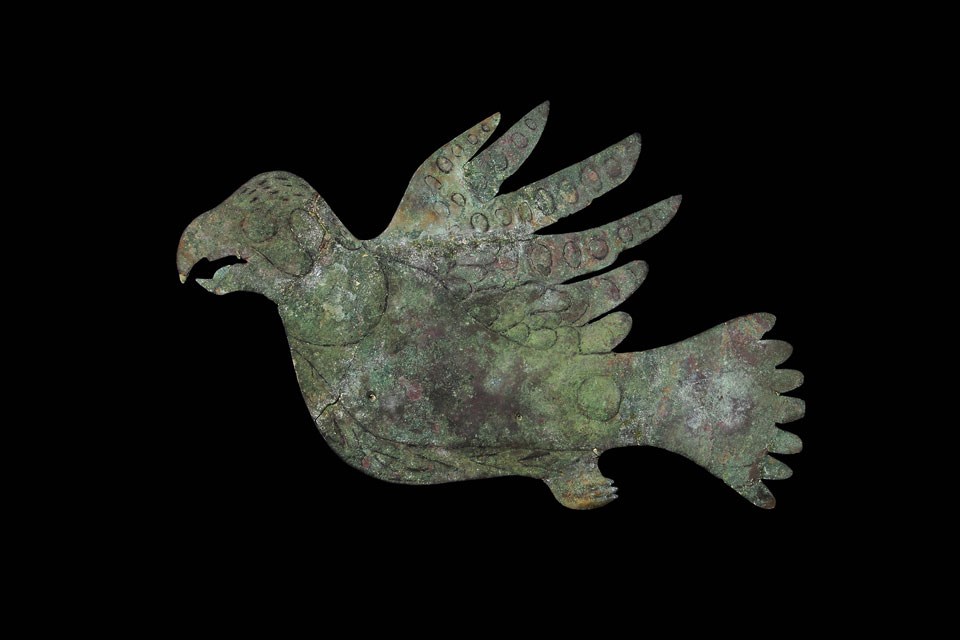Last updated: June 17, 2022
Article
Hopewell Culture Copper
Written by Park Guide, Sarah Hinkelman
Copper might not be an “exotic” raw material to you. Can you think of any uses for copper?
We use copper often in our daily lives, probably without even knowing it. You might see bits of copper on the sidewalk or even in your pocket since it is the metal that coats pennies. It also is used in many electronics since it is a great material for transferring energy. Copper was also used to create one of our nation’s most recognizable monuments, the Statue of Liberty!
We see it a lot in our everyday life, but for the people of the Hopewell culture in the Scioto River Valley 2,000 years ago, copper was a sacred metal. They used this beautiful metal to create some of the ceremonial objects archeologists found in the earthworks here at Hopewell Culture National Historical Park.

NPS photo/A. Weiland
Copper is one of just a few metals that can be found in a form that is usable by humans. The people of the Hopewell culture valued it for its various qualities. Like many materials used in Hopewell ceremonial art, it was shiny when polished and able to reflect sunlight or the glow of a fire. The metal can also be shaped by hand. Ancient artists, folded, hammered, drilled, and rolled copper using stone and bone tools. Just like today, the metal was used to create jewelry and decorations. But the decorations created in the Hopewell tradition were part of ceremonial regalia that included: beautiful earspools, headdresses, buttons, tinklers (rattle like ornaments), axes, plates, and many other shapes and patterns including the falcon effigies that serve as our park symbol.
Collecting copper was no small feat. The people of the Scioto River Valley had to travel over 300 miles by foot and boat to mine copper from either Lake Superior or the Southern Appalachian Mountains. Most of the copper found in the earthworks in the Scioto River Valley came from sources in and around Lake Superior, a nearly 800-mile journey (one way!). Some came from sources in the Appalachian Mountains, and these ancient Ohioans could have collected quartz crystal, mica, and other exotic materials in these mountains, kind of like how we collect souvenirs from vacations and special events. Some of the copper from Ohio mounds could have been carried here in glacial ice and meltwaters. These ancient travelers likely encountered other groups across the eastern United States, forming close connections and relationships allowing their Hopewellian beliefs and practices to spread.

NPS Photo / Tom Engberg
Hopewell copper objects were made particularly for religious ceremonies, likely playing roles in animating myths, and used in song and dance. The material in its final form was viewed as a living thing with a spirit and was given ceremonial burials in the mounds here at Hopewell Culture National Historical Park. Historic and modern American Indian tribes continued to view copper as a sacred metal with spiritual powers. The metal is associated with Mishipeshu, the Great Lynx or Water Panther, the protector of copper. In Ojibwa oral tradition, the Great Lynx is a powerful dragon-like animal with a feline face and paws, its deer-like horns are made of copper and its body is covered with scales and dagger-like spikes running down its back and long copper tail. This being has the power to create storms and drown humans. Mishipeshu must be revered through offerings so that one may pass safely along the waters of Lake Superior and acquire its precious metal, copper.
While we might not see copper as exceptionally special, it was powerful and valued by the people of the Hopewell culture 2,000 years ago and many American Indian tribes past and present. You can see some of the magnificent copper pieces created in the Hopewell tradition on display in our museum at Mound City along with some of the other fantastic exotic materials used by these Native Americans to create beautiful works of sacred art.
